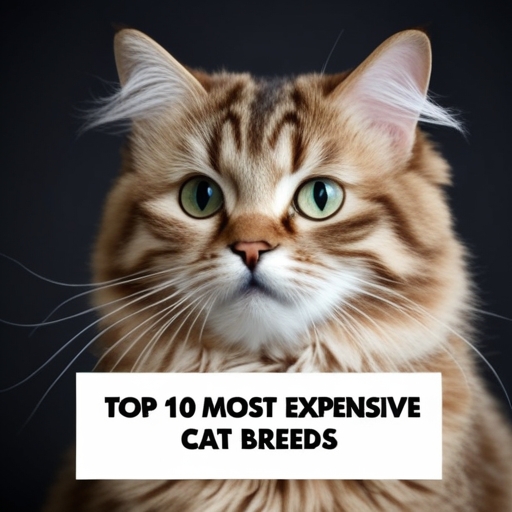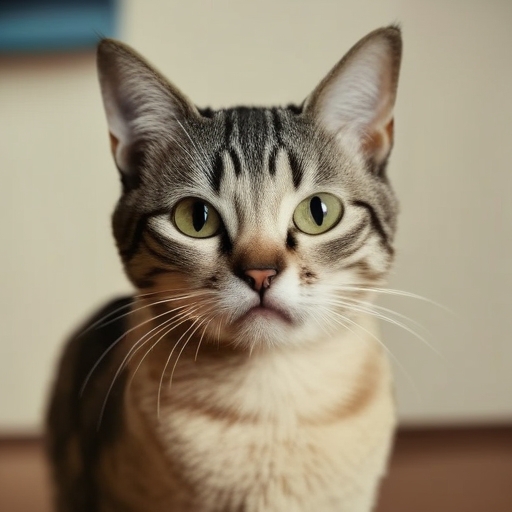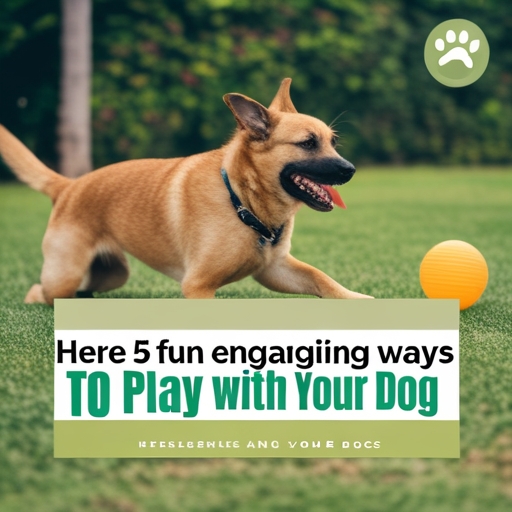Top 10 Most Expensive Cat Breeds

Russian Blue The Russian Blue is a highly sought-after and expensive cat breed, renowned for its stunning appearance and endearing personality. Here are some key characteristics that make this breed so desirable: Russian Blues are medium in size, with adults typically weighing between 8 to 15 pounds, where males are generally larger than females. They have a long, lean body that is fine-boned yet muscular, complemented by a wedge-shaped head, large delicate ears, and roundish, bright green eyes. Their legs are long and lean, and they have a long tail that adds to their elegant and graceful appearance. One of the most distinctive features of the Russian Blue is its short, dense coat that is uniformly steel blue in color. Each hair is silver-tipped, giving the coat a shimmering, smoky sheen. This unique coat coloration, along with their mauve or lavender footpads, sets them apart from other blue-coated cats. Russian Blues are known for their friendly, intelligent, and loyal nature. While they may appear aloof or shy around strangers, they are deeply affectionate and playful with their owners. They enjoy human interaction and are often described as calm, gentle, and sweet. These cats are highly intelligent and can be easily trained, with many enjoying games like fetch. Russian Blues are generally a healthy breed with a long lifespan, typically ranging from 12 to 15 years, although some have been known to live up to 20 years or more. They are somewhat hypoallergenic due to their low shedding coat, making them a good choice for people with mild cat allergies. These cats thrive in calm, predictable environments and are not ideal for noisy or chaotic households. They require regular grooming, about once a week, to maintain their beautiful coat. Russian Blues are adaptable to both indoor and outdoor living but prefer a calm and peaceful home environment. The Russian Blue is one of the more expensive cat breeds, with prices ranging from $500 to $1000 USD, depending on the intensity of their coat color and other factors. Their unique appearance, intelligent nature, and loyal personality make them a valuable and beloved companion for many cat enthusiasts. British Shorthair The British Shorthair boasts a compact, well-balanced, and powerful body with a broad chest, short to medium strong legs, and rounded paws. According to PetMD, the head is rounded with good width between the ears, round cheeks, a firm chin, medium-sized ears, and large, round eyes that can be blue, copper, gold, or odd-eyed depending on the coat color. Persian Cat The Persian cat has a rich history, with the oldest written records dating back to the early 1500s. However, some believe that the long-haired cats depicted in ancient hieroglyphs may be ancestors of the Persian cat, suggesting an even older lineage. Originating from the Persian Empire, these cats have been associated with nobility and elegance throughout history. Peterbald The Peterbald is considered one of the more expensive cat breeds, with prices ranging from $1000 to $2000 USD, reflecting their unique genetic makeup, the specialized care they require, and their popularity among cat enthusiasts. Bengal Cat The Bengal cat, renowned for its striking appearance and vibrant personality, is a hybrid breed that has garnered significant attention and admiration. This breed is the result of a deliberate breeding program initiated in the 1960s and restarted in 1981, aiming to combine the genetic traits of the Asian Leopard cat (Felis bengalensis) with those of domestic cats to create a wild-appearing yet domesticated feline. Lykoi The Lykoi is one of the more expensive cat breeds, with prices ranging from $2,000 to $3,000 according to Purina. Scottish Fold The Scottish Fold’s unique appearance is due to a genetic mutation that affects cartilage formation, known as osteochondrodysplasia. This mutation can lead to various health issues, including deformities and potential arthritis, particularly in the tail and joints. It is crucial to handle their tails gently to avoid causing pain. Breeding Scottish Folds requires careful consideration, as breeding two folded-eared cats can result in impaired kittens with difficulty walking. According to Wikipedia, this genetic condition is a defining characteristic of the breed and requires special attention in their care. Toyger The Toyger is a relatively rare breed, which is reflected in its cost. The price range for a Toyger can vary from $1,500 to $6,000, depending on factors such as the breeder, bloodlines, and location; this information is supported by a reputable source like Cattitude Seattle. Sphynx The Sphynx cat is one of the more expensive breeds, with a price range typically between $2,000 to $5,000, partly due to the need for breeders to test for genetic health issues such as hypertrophic cardiomyopathy (HCM), as indicated by PetMD. Savannah Cat The Savannah Cat is classified into different generations based on their parentage. F1 Savannahs, which are 50% serval and 50% domestic cat, are the most expensive and least domesticated, costing up to $20,000. Later generations, such as F2 and F3, are smaller and more affordable, ranging from $1,000 to $12,000. The cost is largely due to the difficulty and expense of breeding these cats, including the challenges of housing and feeding servals and the complications that can arise during pregnancy and breeding.
10 of the Most Playful Cat Breeds for Active Families

Siamese The Siamese cat is an exemplary choice for active families due to its highly energetic, social, and playful nature. This medium-sized, sleek breed is characterized by its long, tapering lines, muscular yet lithe build, and strikingly blue, almond-shaped eyesPetMD. Appearance and Physical Characteristics Siamese cats are known for their short, soft coat which comes in a variety of colors including seal, chocolate, blue, and lilac, with distinctive darker color patterns on the ears, face, tail, legs, and feet. These point patterns are a result of recessive genes that cause the production of melanin only in cooler areas of the skin. They typically weigh between 8-12 pounds and have a life expectancy of 15-20 yearsWikipedia. Personality and Social Needs Siamese cats are renowned for their sociable and affectionate personalities. They bond strongly with their human family, often following their owners around the house and seeking constant interaction. This breed is highly vocal, using loud, deep voices to “talk” and communicate with their owners, and they can become depressed if left alone for extended periods. Their even-keeled temperament makes them an excellent fit for families with children and other pets, provided those pets have similar energy levels. Playfulness and Activity Level Siamese cats are incredibly playful and require a high level of activity to stay entertained. They thrive on family playtime and conversation, needing plenty of toys and tall cat trees to explore. Engaging in games and providing enrichment activities is crucial to prevent boredom, as they can get bored quickly if their needs are not met. Their intelligence and agility also make them great jumpers, and they appreciate heights, making perches and cat trees essential components of their environment. Care and Health Considerations While Siamese cats have low grooming needs due to their short coat, they do appreciate brushing as a form of affection. They are also prone to certain health issues, such as eye problems and poor eyesight, so regular veterinary check-ups are important. Additionally, their slim legs are not designed to support excess weight, so careful nutrition management is necessary to prevent obesity. Overall, the Siamese cat is an ideal breed for active families who can provide the necessary attention, interaction, and enrichment activities to keep this energetic and loving cat happy and healthy. Japanese Bobtail The Japanese Bobtail is a highly energetic and playful cat breed that makes an excellent addition to active families. Here are some key characteristics that highlight their suitability for dynamic households: Physical Characteristics Japanese Bobtails are small to medium-sized cats, with females weighing between 5 and 7 pounds and males weighing between 8 and 10 pounds. They are known for their muscular build, particularly in their hind legs, which are longer than their front legs and give them a distinctive Z-shaped stance. This physical trait enables them to make high jumps and move with remarkable agility. Their coat can be either short or long, but it is always silky and soft. The breed comes in a wide variety of colors and patterns, with bi-colors and calico being particularly common. One of the most recognizable features of the Japanese Bobtail is its short, pom-pom-like tail, which is a result of a recessive gene. Abyssinian The Abyssinian breed is perfect for families who are looking for a playful, intelligent, and affectionate cat that will keep them engaged and entertained, as highlighted by their high energy levels and interactive nature according to Cornell University College of Veterinary Medicine. Manx The Manx cat boasts a thick, double coat that can be either short or long, with the long-haired version sometimes referred to as the Cymric. Their coats come in a wide range of colors and patterns, including white, blue, black, red, cream, silver, tortoiseshell, and brown, although they do not come in the pointed pattern or colors like chocolate or lavender. Siberian The Siberian cat is an exemplary choice for active families seeking a playful, intelligent, and affectionate companion. Here are some key characteristics that make Siberians stand out: Siberian cats are renowned for their high intelligence and playful nature. They are among the smartest cat breeds and love to engage in interactive games and activities that challenge them mentally. Whether it’s chasing a feather toy, climbing furniture, or exploring every nook and cranny of the house, Siberians are always eager to play and stay active. According to Wikipedia, these feline friends are quick learners and enjoy mental stimulation through play. Burmese The Burmese cat is an exemplary choice for active families due to their energetic, playful, and highly social nature. Here are some key characteristics that make them stand out as one of the most playful cat breeds: Burmese cats are medium-sized, with strong, muscular bodies and a stocky, compact build that belies their actual weight. They have short, silky coats that come in a variety of colors including sable, champagne, blue, platinum, and several others. Their grooming needs are minimal, requiring only occasional brushing to remove loose hair and maintain their coat’s appearance. Burmese cats are known for their lifelong kitten-like personality, remaining playful and energetic well into adulthood. They are curious and love to explore their surroundings, making them ideal for homes with secure outdoor areas or catios where they can exercise their natural instincts. These cats are highly people-oriented and affectionate, often displaying dog-like loyalty to their families. They thrive in family settings where they can receive ample attention from multiple people, making them excellent companions for households with older children. Burmese cats form strong bonds with their humans and can become upset if left alone for extended periods, so they are not suited for households where they would be isolated for long. Burmese cats are intelligent and curious, enjoying mental stimulation through puzzles and interactive toys. They are quick learners and respond well to positive reinforcement, allowing them to pick up basic commands like “sit” and “come”. Given their high energy levels, Burmese cats require regular playtime and physical activity. They benefit from having cat trees, scratching posts, and a
8 Flat-Faced Cats with the Cutest Smooshed Faces

Breed Characteristics Breed Characteristics Flat-faced cat breeds, scientifically known as brachycephalic breeds, are distinguished by their unique and endearing facial structure. Here are some key characteristics and health considerations associated with these breeds. Facial Structure The most defining feature of flat-faced cats is their brachycephalic skull, which results in a flat face and short nose. This shortened skull bone leads to a pushed-in face and nose, giving them an almost cartoon-like or human-like appearance. Breeds such as the Persian, Himalayan, and Exotic Shorthair have the most extreme flat faces, with their forehead, nose, and chin often appearing in vertical alignment when viewed in profile Physical Appearance Flat-faced cats vary in size and body type but often share certain physical traits. For example, the Persian cat is known for its strong, muscular body, short legs, and a long, luxurious flowing coat that requires regular grooming to prevent matting. The British Shorthair, another moderately flat-faced breed, has a compact, well-balanced body with a short, dense coat and round, expressive eyes. Temperament These cats are generally known for their calm, affectionate, and gentle nature. Persian cats, for instance, are praised for their sweet, laid-back temperament and love for being showered with affection. They prefer quiet environments and are not suited for households with extremely energetic children. Similarly, the British Shorthair is described as sweet, easy-going, and affectionate, making them an instant charmer. Health Considerations While their unique faces are undeniably cute, they also come with specific health challenges. Brachycephalic airway syndrome is a common issue, resulting from the narrowed nostrils and compressed upper respiratory tract. This can lead to symptoms such as noisy breathing, snoring, and difficulty exercising, especially in hot weather. Dental problems are another concern due to the shortened jaw, which can cause overcrowding of teeth, misalignment, and an increased risk of dental disease. This not only affects their ability to eat but can also lead to chronic pain. Eye conditions are prevalent due to the prominent, wide-set eyes and shallow eye sockets that do not fully protect the eyeball. This increases the risk of dryness, ulcers, and traumatic injuries. Additionally, the tear ducts in these breeds may not function optimally, leading to persistent tear staining and potential infections. Understanding these health considerations is crucial for ensuring the well-being of these beloved pets and providing them with the necessary care and attention. Persian The Persian cat is one of the most recognizable and beloved flat-faced cat breeds, renowned for its distinctive appearance and gentle nature. Characterized by their extremely flat faces, Persians have a breed standard that specifies their forehead, nose, and chin should appear in vertical alignment when viewed in profile. This unique facial structure, combined with their large, round, full eyes set far apart, gives them a particularly sweet and endearing expression. Persian cats are medium in size, with short, muscular legs and a strong, stout body. They have full cheeks, small noses and mouths, and small ears in proportion to their head. Their long, wavy fur is a hallmark of the breed, requiring regular grooming to prevent matting and tangling. The eye color of Persian cats often matches their fur colors, with common shades including brown, grape, and gold. Known for their calm, gentle, and affectionate personalities, Persian cats are ideal lap cats. They love to be held, cuddled, and showered with affection, often enjoying long periods of being petted. These cats are not very curious or active and prefer quiet, peaceful environments, making them a great fit for homes with predictable routines and minimal noise. They are particularly suited to families with older children or those who can provide a gentle and calm atmosphere, as they may not get along well with extremely energetic children. Despite their laid-back nature, Persian cats are very attached to their owners and can be quite vocal when expressing their concerns. However, they are generally quiet and not prone to excessive meowing. They enjoy lounging in sun-warmed spots and can be left alone for extended periods as long as they feel secure and comfortable. The life expectancy of Persian cats is typically between 12 to 15 years, and they require careful attention to their diet, grooming, and health to ensure they live a happy and healthy life. Himalayan The Himalayan cat is a captivating breed known for its unique blend of physical and personality traits, making it a favorite among cat enthusiasts. Here are some key characteristics of the Himalayan cat: Physical Characteristics Himalayans are medium-sized cats, typically weighing between 8 and 15 pounds, although their dense, long fur can make them appear larger. They have a distinctive flat face, a trait inherited from their Persian ancestry, characterized by a short snout, round eyes, and chubby cheeks. This brachycephalic feature gives them an endearingly sweet expression. Their coat is long, dense, and thick, requiring daily grooming to prevent matting and tangling. The coat colors and patterns are pointed, meaning the extremities (face, ears, legs, and tail) are darker, while the rest of the body is lighter. Available colors include chocolate, seal, lilac, blue, and various other shades such as flame, red, and cream. Personality and Behavior Himalayans are known for their gentle, affectionate, and highly intelligent nature. They are often described as lap cats due to their love for human companionship and their calm, easygoing demeanor. They rarely vocalize and can adapt well to apartment living and smaller spaces, especially if introduced to other animals at a young age. Despite their calm nature, Himalayans can exhibit bursts of kitten-like activity, enjoying playtime with interactive toys, chasing balls, and engaging with catnip mice. However, they may need encouragement to exercise regularly to maintain a healthy weight, as they are prone to obesity. Health and Longevity Himalayans generally have a moderate to long lifespan, typically ranging from 8 to 15 years. However, their close genetic relationship to Persians puts them at a higher risk for health issues such as polycystic kidney disease and progressive retinal atrophy. Additionally, their flat-faced anatomy can lead to
How Much Exercise Do Cats Need? Here’s What To Know

How Much Exercise Do Cats Need? Determining the right amount of exercise for your cat is crucial for their overall health and well-being. Here are some key points to consider: The recommended amount of exercise for cats varies based on factors such as age, breed, and individual energy levels. Generally, adult cats need around 30 minutes of moderate exercise per day to stay healthy and happy. This can be broken down into shorter, intense play periods. For instance, engaging your cat in at least three five-minute intense play periods each day is often suggested. Kittens, being more energetic, typically require more exercise, often needing an hour or more of physical activity daily. In contrast, older cats may need less intense and shorter exercise sessions due to their reduced energy levels and potential health issues. Why is It Important for Cats to Exercise? Why is It Important for Cats to Exercise? Exercise is paramount for the overall health and well-being of cats, impacting both their physical and mental health in several critical ways. Physical Health Benefits: Regular exercise is essential for maintaining a healthy weight in cats. Just like humans, cats need to burn calories to prevent obesity, which is associated with serious health issues such as diabetes, arthritis, and heart disease. Physical activity helps strengthen and tone their muscles and bones, which is particularly important as cats age, when muscle loss and weakness can become more prevalent. Mental Health Benefits: Exercise provides significant mental stimulation for cats. It helps prevent boredom, anxiety, and depression, which can lead to destructive behaviors such as excessive clawing, biting, or over-grooming. Engaging in playtime with interactive toys or games keeps cats mentally sharp and engaged, reducing stress and anxiety. This mental stimulation is crucial for maintaining their emotional well-being and preventing behavioral problems. Behavioral Benefits: Regular physical activity helps cats develop good behavioral habits. Playtime teaches them the appropriate times to be active and rest, preventing them from engaging in destructive behaviors like destroying household items. It also helps in social interaction with humans and other pets, fostering a more balanced and harmonious household environment. Natural Instincts: Cats are natural hunters, and exercise allows them to tap into these instincts. Activities such as chasing laser pointers, feather wands, or stuffed mice mimic their natural hunting behaviors, providing them with the physical and mental stimulation they need to stay healthy and happy. In summary, exercise is vital for cats to maintain their physical health, mental well-being, and to engage in behaviors that are natural to their species. By incorporating regular playtime into their daily routine, cat owners can help their pets lead a more fulfilling and healthy life. How to Exercise Your Cat How to Exercise Your Cat Exercising your cat is crucial for maintaining their physical and mental health, and there are several engaging and effective ways to ensure your feline friend gets the activity they need. Interactive Play and Toys Interactive play is a key component of a cat’s exercise routine. Using toys that encourage chasing and jumping, such as feather wands, laser pointers, and balls, can provide your cat with the aerobic exercise they require. Laser pointers, in particular, are excellent for stimulating your cat’s natural hunting instinct, prompting them to chase and run around. Interactive cat toys, including food puzzles and battery-operated toys, are also highly beneficial. These toys enable your cat to play independently and can dispense food or hide treats, which is great for food-motivated cats. This type of play not only provides physical exercise but also mental stimulation, helping to prevent boredom, anxiety, and depression. Vertical Space and Climbing Providing vertical space for your cat to climb and jump is another effective way to encourage exercise. Installing cat trees, shelves, or ramps allows your cat to engage in both aerobic and anaerobic activities, such as climbing and scratching. Scratching posts covered in natural fibers are particularly useful for toning your cat’s back and shoulder muscles as they dig in with their claws. Outdoor and Leash Training For cats that are comfortable outdoors, training them to walk on a leash and harness can be a great way to get them active while ensuring their safety. Additionally, swimming can be a low-impact yet effective exercise for overweight cats, as it reduces strain on their joints. Competitive Play and Agility Engaging your cat in competitive play, such as navigating an agility course with ramps, steps, poles, tunnels, and hoops, can foster emotional bonds and encourage greater levels of fitness. This type of play mimics natural hunting behaviors and can be adapted to your home environment. Routine and Scheduling To ensure your cat gets enough exercise, it’s important to establish a routine. Cats are naturally most active during crepuscular hours (dawn and dusk), so scheduling play sessions around these times can help keep them more engaged. Short play sessions of 10-15 minutes, repeated several times a day, are recommended, especially for older cats. Kittens, however, may require up to 10 sessions per day due to their high energy levels. Environmental Enrichment Creating an exercise station or kitty recreation center at home can also be beneficial. This can include a cat wheel, climbing trees, and other interactive elements that encourage your cat to stay active. Changing the environment periodically by introducing new toys or rearranging the layout can help keep your cat interested and engaged. By incorporating these methods into your cat’s daily routine, you can help ensure they receive the necessary physical and mental stimulation to maintain a healthy and happy lifestyle.
Here Are 14 Common Dog Health Problems to Watch For As a Pet Parent

Skin Issues Skin Issues Skin issues are among the most prevalent and bothersome health problems that dogs can encounter, and they can arise from a variety of causes. Here are some key aspects to understand: # Causes Skin issues in dogs can be triggered by several factors, including allergies, parasites, and bacterial or fungal infections. Allergies, for instance, can be due to fleas, food ingredients, or environmental allergens such as pollens, grass, dust, and mold. These allergies lead to the release of histamine, causing intense itchiness and skin irritation(American Kennel Club). Parasites, such as fleas, ticks, and mites, can also cause significant skin problems. These external parasites can lead to conditions like mange and flea allergy dermatitis, characterized by excessive scratching, redness, and hair loss. # Symptoms The symptoms of skin issues in dogs can be quite distressing for both the dog and the pet parent. Common signs include itching and scratching, red and inflamed skin, flaky or scaly skin, and patches of hair loss. The skin may appear abnormal, with lumps, bumps, or sores, and there can be a strong unpleasant odor if an infection is present. # Specific Conditions Several specific skin conditions are common in dogs: – Bacterial Skin Infections: These can occur due to an overgrowth of normal skin bacteria or the introduction of bacteria through skin injuries. Symptoms include scaly red patches, small red bumps or pustules, and moist regions of inflamed skin. Treatment typically involves oral antibiotics or medicated shampoos. – Yeast Infections: Yeast is a fungus that normally lives on a dog’s skin but can become problematic due to allergies or an overproduction of oil. This leads to crusting, itching, and a strong smell, and can eventually cause the skin to thicken. Yeast infections are not contagious but require veterinary treatment to address the symptoms and underlying cause. – Seborrheic Dermatitis: This condition occurs when the sebaceous glands produce too much sebum, leading to scaly, oily, or crusty skin. It can be inherited but is often a symptom of other factors like allergies, hormonal imbalances, or infections. # Treatment and Management Managing skin issues in dogs often requires a combination of treatments. For allergies, this might involve allergy medications or avoiding the allergen. Bacterial skin infections are typically treated with oral antibiotics or medicated shampoos. Yeast infections may require topical creams, washes, and tablets. In all cases, it is crucial to consult a veterinarian to determine the underlying cause and appropriate treatment plan. Regular veterinary exams are essential for early detection and management of skin issues, helping to prevent them from becoming severe and ensuring the overall health and comfort of your dog. Ear Infections The most common causes of ear infections in dogs include bacterial and yeast overgrowth, often resulting from an underlying issue that compromises the normal protective barrier of the ear, according to PetMD. Foreign bodies like grass awns or foxtails, endocrine issues such as hypothyroidism, polyps, and trauma to the ear can all contribute to the development of an infection. Kennel Cough The most distinctive symptom of kennel cough is a persistent, dry, hacking cough, often described as having a “honking” sound. Other symptoms include sneezing, runny nose, nasal discharge, and in some cases, retching with the production of white foam. Dogs may also exhibit tracheal sensitivity, where they cough when gentle pressure is applied to their trachea. Additional signs can include lethargy, loss of appetite, and a low fever. In severe cases, symptoms can progress to labored breathing, a moist cough, high fever, and nasal discharge, potentially developing into pneumonia. Urinary Tract Infections The presence of blood or cloudiness in the urine is a strong indicator of a UTI or a more serious condition such as bladder stones or urinary blockage, according to PetMD. Parvo The survival rate for dogs treated by a veterinarian is between 68% and 92%, with most puppies that survive the first three to four days likely to make a complete recovery, according to Merck Veterinary Manual. Parasites As a pet parent, it is crucial to be aware of the various parasites that can affect your dog’s health. Parasites in dogs can be categorized into internal and external types, each with distinct characteristics and potential health impacts. Internal parasites reside within your dog’s body, often in the intestinal tract, and can cause a range of health issues. Here are some of the most common internal parasites: – Hookworms: These intestinal parasites attach to the intestinal wall and ingest a significant amount of blood, which can lead to anemia, particularly in puppies. If left untreated, hookworm infections can be fatal. – Roundworms: Roundworms, such as *Toxocara canis* and *Toxascaris leonina*, are very common in dogs and can be diagnosed through a fecal sample. They can cause digestive upset, bloated abdomen, malnutrition, coughing, diarrhea, and vomiting. Roundworms can also be transmitted to humans, especially children. – Tapeworms: Tapeworms, like *Dipylidium caninum*, reside in the intestines and are typically transmitted by ingesting an infected flea. They can cause intestinal distress and stunt the growth of puppies. Some tapeworms, such as *Echinococcus*, are zoonotic and can be transmitted to humans. – Whipworms: Whipworms, such as *Trichuris vulpis*, inhabit the large intestine and colon. They are usually transmitted through contaminated soil or water and can cause diarrhea, weight loss, and anemia. – Heartworms: Heartworms (*Dirofilaria immitis*) are transmitted via an infected mosquito and can cause significant damage to the heart and lungs if not treated promptly. This condition can be life-threatening if left untreated. – Giardia: Giardia is a microscopic protozoan that infects the small intestine of dogs. It is often found in contaminated water, food, or environments and can cause vomiting, diarrhea, dehydration, lethargy, and weight loss. External parasites attach to the outside of your dog’s body and can also cause significant discomfort and health issues. – Ticks: Ticks are tiny arachnids that latch onto your dog and drink blood. They can be identified by running your hand over your dog’s head, neck, ears, and feet, where
6 Ways to Keep Your Dog Active in the Winter

Have the Right Gear Have the Right Gear To keep your dog active and comfortable during the winter months, having the right gear is paramount. Here are some essential items to consider: Winter Coats and Jackets A warm, insulated dog coat can be a lifesaver for dogs that are sensitive to cold temperatures. These coats are particularly important for small dogs and short-haired breeds that lack the natural insulation of thicker fur. When selecting a coat, look for one with a smooth surface to prevent wet snow from sticking and freezing into ice, and ensure it has openings if your dog wears a harness. Dog Boots and Booties Dog boots or booties are crucial for protecting your dog’s paws from harsh winter conditions such as ice, salt, and chemical ice melts. These boots provide traction and prevent paw pads from cracking and becoming painful. It’s advisable to introduce boots gradually, starting with indoor practice to help your dog get accustomed to wearing them. High-quality options like Ruffwear’s Polar Trex booties feature a Vibram sole for traction and insulated, breathable fabric for weatherproof protection. Paw Protection Alternatives If your dog is not comfortable wearing boots, paw balm can be an alternative. Apply paw balm after wiping off your dog’s paws to soothe and protect them from the cold and harsh chemicals. However, boots are generally more effective in providing comprehensive protection. Reflective and Safety Gear Enhance your dog’s visibility during low-light winter conditions with safety lights or reflective gear. This is especially important for early morning or evening walks when visibility is reduced. Additional Accessories Other useful accessories include dog socks to make boots more comfortable and secure, and dog goggles like RexSpecs to protect your dog’s eyes from the bright reflection off snow and potential eye injuries such as pannus, particularly in breeds with light-colored eyes. By equipping your dog with the right winter gear, you can ensure they stay warm, comfortable, and protected, allowing you to enjoy a variety of winter activities together without compromising their safety or well-being. Play Inside Play Inside Keeping your dog active and engaged during the winter months doesn’t have to mean braving the cold outdoors. There are several fun and effective ways to ensure your dog gets the mental and physical stimulation they need from the comfort of your home. Hide-and-Seek One of the most engaging indoor activities is playing hide-and-seek with your dog. Start by having your dog stay in one room while you hide in another. Use a release command to let your dog find you. According to American Kennel Club, reward them with treats and praise when they successfully locate you. As your dog becomes more proficient, you can increase the difficulty by hiding in harder-to-find spots or having someone else give the release command. Doggy Drills and Obedience Training Utilize basic dog commands to create a series of drills that keep your dog active and focused. Give your dog a sequence of commands such as sit, come, stop, and run, if they have been taught these. Vary the routine and provide praise and rewards between repetitions to keep your dog engaged and motivated. Scavenger Hunts Engage your dog’s keen sense of smell with an indoor scavenger hunt. Show your dog their favorite toy, then hide it while they are in a stay position. Use the “find it” command and watch as your dog searches for the toy. You can start by hiding the toy in plain sight and gradually increase the difficulty by hiding it in other rooms or leaving scent trails on furniture and walls. Tug of War and Soft Toy Fetch High-energy games like tug of war and soft toy fetch are excellent ways to keep your dog active indoors. Use a rope toy or any other durable toy for tug of war, and for soft toy fetch, throw a toy across a room or hallway for your dog to retrieve. These games not only provide physical exercise but also help in strengthening the bond between you and your dog. Stair Games If you have a flight of stairs, you can turn it into a fun and intense workout for your dog. Toss your dog’s favorite ball or toy up the stairs and have them retrieve it, then bring it back down to you. This activity boosts the intensity of regular fetch and helps your dog burn more calories. DIY Obstacle Courses and Treat Puzzles Set up an indoor agility course using items like cones, tunnels, and boxes. Alternatively, you can create treat puzzles using puzzle toys or even DIY versions with muffin tins. These activities challenge your dog mentally and physically, keeping them engaged and active even on the coldest winter days. By incorporating these indoor activities into your routine, you can ensure your dog remains happy, healthy, and active throughout the winter season. Plan a Pup-Date Plan a Pup-Date During the cold winter months, socialization and physical activity for your dog are just as crucial as they are during any other time of the year. One of the most engaging and fun ways to keep your dog active and socially stimulated is by planning a pup-date. # Indoor Playdates If the weather outside is too harsh, consider hosting or attending indoor playdates. This can be a great way to ensure your dog interacts with other dogs in a warm and safe environment. Invite friends with dogs that your pet is familiar with, or look for local indoor dog parks or dog daycare facilities that offer playgroups. # Setting Up the Environment Before the playdate, make sure to prepare your home by putting away any breakable items and setting up a safe and comfortable space for the dogs to play. This could include designating a specific area for play, such as a living room or a large indoor space, and ensuring that all dogs are well-behaved and tolerant of each other’s presence. # Benefits of Socialization Indoor playdates provide an excellent opportunity for your dog
The Top 8 New Year’s Resolutions For Your Pet in 2023

Focus on Preventative Care Focus on Preventative Care Focusing on preventative care is one of the most critical New Year’s resolutions you can make for your pet’s health and well-being. This approach involves regular and proactive measures to detect and prevent health issues before they become severe. # Annual Wellness Exams Regular veterinary check-ups are essential for maintaining your pet’s health. Annual wellness exams allow veterinarians to screen for various health issues, identify diseases or other problems early, and provide timely interventions. Since animals are adept at hiding pain until it becomes serious, these regular visits are crucial for catching health issues before they escalate into major problems. # Vaccinations and Health Baseline Preventative care includes staying up-to-date on vaccinations, which are customized based on your pet’s lifestyle, exposure risk, and current health status. Establishing a health baseline early in your pet’s life helps in monitoring chronic conditions and making informed decisions about treatment options. This baseline data enables veterinarians to detect deviations from normal health metrics, allowing for proactive management of potential health trends. # Parasite Control Year-round parasite prevention is vital to protect your pet from flea, tick, and heartworm diseases. These preventives should be administered consistently, as missing even a single dose can leave your pet vulnerable to life-altering diseases or uncomfortable infestations. Setting reminders or using autoship options can help ensure that your pet receives these medications regularly. # Dental Care Oral health is a significant aspect of preventative care. Periodontal disease, a painful and progressive condition, affects a large percentage of pets by the time they are two years old. Proactive dental care includes daily at-home toothbrushing, annual dental examinations, and periodic professional cleanings under anesthesia. These measures help prevent or correct harmful plaque and tartar buildup, keeping your pet pain-free and reducing the risk of systemic health issues such as heart and kidney disease. By prioritizing preventative care, you can significantly enhance your pet’s quality of life, extend their lifespan, and ensure they remain healthy and happy throughout the year. Commit to More Training Commit to More Training Committing to more training for your pet is a pivotal New Year’s resolution that can significantly enhance their behavior, well-being, and the bond you share with them. Here are several reasons and ways to incorporate more training into your pet’s routine: # Improve Communication and Behavior Training is not just about correcting bad behavior; it is fundamentally about improving communication between you and your pet. Since dogs do not speak English and their brains function differently from human brains, regular training sessions help your dog understand what you expect from them. This clarity can lead to a more fulfilling and less frustrating relationship for both you and your pet. # Basic Obedience and Advanced Training Starting with basic obedience commands such as “sit,” “stay,” and “come” is essential for any pet. These commands not only help in managing everyday situations but also provide a foundation for more advanced training. Advanced training techniques can include off-leash training, learning tricks, completing agility courses, or even training your dog to become a therapy dog. These activities not only challenge your pet mentally but also physically, contributing to their overall health and happiness. # Socialization and Bonding Training classes are an excellent way to socialize your pet, especially during National Train Your Dog Month in January. Socialization helps your pet interact better with other animals and people, reducing anxiety and unwanted behaviors. Additionally, training classes provide a structured environment that reinforces the bond between you and your pet, as it involves consistent interaction and positive reinforcement. # Mental Stimulation and Enrichment Training and interactive activities serve as a form of mental stimulation, which is crucial for preventing boredom and stress in pets. Enrichment activities such as puzzle feeders, interactive toys, and physical activities like fetch and agility courses can be integrated into your training routine. These activities provide both physical and mental stimulation, ensuring your pet remains engaged and happy. By making a resolution to commit to more training, you are investing in your pet’s behavioral development, mental health, and the quality of your relationship with them. Whether you choose to practice commands and tricks at home or enroll in professional training classes, this commitment will have a lasting positive impact on your pet’s well-being. Prioritize Dental Care The prevalence of dental disease in pets is a significant concern, with approximately 80% of dogs and 70% of cats displaying signs of oral issues by the age of three. According to AVMA, dental health is as crucial to your pet’s overall well-being as nutrition and exercise. Improve Your Pet’s Diet Improving your pet’s diet is a crucial New Year’s resolution that can significantly impact their health, happiness, and overall well-being. Here are several key strategies to consider: Choose a High-Quality Pet Food Ensure that the dry kibble you are feeding your pet is of high quality. This means the food should have a protein source as the first ingredient, avoid added colors or dyes, include listed fruits and vegetables, and be preserved naturally. Consulting with your veterinarian to select the right pet food tailored to your pet’s age, breed, and health needs is essential. Add Hydration Dry kibble provides only about 10% moisture, whereas pets need approximately 70% moisture in their diet. Adding hydration through bone broth, goat milk, or even soaking kibble in water can help rehydrate the food and ease the digestive process. Options like coconut water and decaffeinated green tea can also be beneficial, provided they are free from toxic flavors and seasonings. Incorporate Whole Foods Introducing fresh, whole foods into your pet’s diet can enhance nutrient and fiber intake. This includes adding raw or lightly cooked meats, organ meats like liver and heart, and a variety of fruits and vegetables. However, it is crucial to avoid toxic foods such as grapes, raisins, onions, and certain vegetables from the nightshade family. Cooking or pureeing vegetables can make them more digestible for dogs[5]. Rotate Proteins and Foods Rotating
7 Dog Summer Safety Tips

Keep Cool Keeping your dog cool during the summer months is crucial for their health and safety. Here are several effective methods to ensure your dog remains comfortable and protected from the heat. Ensuring your dog has access to plenty of fresh, cool water is essential. Dehydration can quickly lead to heat-related illnesses, so it’s vital to keep your dog hydrated at all times, especially during warm weather, according to American Veterinary Medical Association. In addition to water, providing shade is critical. Whether you are outdoors or in your backyard, make sure your dog has access to shady spots where they can escape the direct sunlight. This can include setting up a canopy, using a gazebo, or simply ensuring there are trees or other natural shade sources available. There are several cooling aids that can help lower your dog’s body temperature… [continue the text as provided] Stay Hydrated Keeping your dog hydrated is crucial, especially during the hot summer months. Here are several strategies to ensure your dog stays well-hydrated and comfortable. According to PetMD, dogs generally need about 1 ounce of water per pound of body weight per day, but this can increase to 3 to 4 times the normal amount in hot weather or during high activity levels. Exercise at Dawn and Dusk Exercise at Dawn and Dusk When it comes to ensuring your dog’s safety during the summer months, timing their exercise is crucial. Exercising your dog at dawn and dusk is highly recommended to avoid the risks associated with high temperatures. # Avoiding Heat-Related Illnesses Dogs are more prone to overheating than humans because they have a limited ability to dissipate heat, as they do not sweat like humans do. According to American Kennel Club, exercising during the hottest part of the day increases the risk of heatstroke or heat exhaustion, which can be life-threatening. Heatstroke occurs when a dog’s body temperature exceeds 109 degrees, causing severe damage to their internal organs, much like cooking an egg. # Optimal Exercise Times To mitigate these risks, schedule walks and other physical activities during the cooler parts of the day, specifically at dawn and dusk. These times offer milder temperatures, reducing the likelihood of heat-related illnesses. Early morning and late evening walks are generally the safest times for dog exercise, as they allow your dog to stay active without exposing them to the peak summer heat. # Protecting Paw Pads In addition to avoiding heat-related illnesses, exercising at dawn and dusk also helps protect your dog’s paw pads. Hot pavement, cement, and sand can burn your dog’s sensitive paw pads. Before letting your dog walk on any surface, test it with your hand or foot; if it’s too hot for you, it’s too hot for your dog. If your dog must walk on hot ground, consider using dog boots and seeking shady areas for walks. By adhering to these guidelines, you can ensure your dog stays safe and healthy during the summer months, allowing them to enjoy necessary physical activity without the risks associated with high temperatures. Watch for Signs of Heatstroke Watch for Signs of Heatstroke Heatstroke in dogs is a severe and potentially life-threatening condition that can arise from prolonged exposure to excessive heat. It is crucial to recognize the signs and symptoms early to ensure prompt intervention and prevent severe consequences. Early Signs The initial indicators of heatstroke in dogs are often subtle but rapidly escalate. These include: – Heavy Panting: Dogs will pant excessively, even when they are not exercising, as a primary mechanism to cool down. – Rapid Breathing and Drooling: As the dog struggles to breathe, panting can progress to distressed or noisy breathing, accompanied by excessive drooling, often with very thick saliva. – Reddened Gums and Mucous Membranes: The gums and tongue may appear bright red or dark red, which is a clear sign of overheating. – Restlessness or Agitation: Dogs may exhibit restlessness, pacing, or seeking shade or water in an attempt to cool down. – Increased Heart Rate: Tachycardia, or a fast heart rate, is another early sign as the dog’s body tries to cope with the heat. Advanced Signs If the condition is not addressed, it can quickly progress to more severe symptoms: – Elevated Body Temperature: The dog’s internal temperature can rise above 104°F (40°C), leading to central nervous system symptoms such as disorientation, confusion, and difficulty walking in a straight line. – Vomiting and Diarrhea: These can occur with or without blood, indicating gastrointestinal distress. – Lethargy and Collapse: As the condition worsens, dogs may become lethargic, unwilling to move, and eventually collapse. – Seizures and Unconsciousness: In advanced stages, heatstroke can cause seizures, muscle tremors, and even unconsciousness. – Labored Breathing and Shock: Labored, noisy breathing and signs of shock, such as white or blue gums, can also occur in the final stages. Immediate Action If you suspect your dog is experiencing heatstroke, it is essential to act quickly. Move the dog to a shaded area, provide cool water to drink, and use cooling methods such as wetting the dog’s coat or using a fan to help lower the body temperature. Immediate veterinary attention is crucial to prevent further complications and ensure the dog’s survival. Provide Sun Protection Provide Sun Protection When it comes to ensuring your dog’s safety during the summer, providing adequate sun protection is crucial. Just like humans, dogs can suffer from sunburn, particularly in areas where their fur is sparse or their skin is lightly pigmented. # Vulnerable Areas and Breeds Dogs are most susceptible to sunburn on areas such as the nose, ears, and face, where the hair is typically thinner or absent. Breeds with white or thin coats, such as Collies, Dalmatians, Bulldogs, and Whippets, are at a higher risk due to their limited natural protection against UV rays. Hairless breeds like the Xoloitzcuintli and American Hairless Terrier are also highly vulnerable and require special care when spending time outdoors. According to ASPCA, it is essential to provide
Here Are 5 Fun and Engaging Ways to Play With Your Dog

Fetch Fetch Playing fetch with your dog is not only an enjoyable activity but also a comprehensive way to engage your pet physically, mentally, and emotionally. Here’s a step-by-step guide on how to teach and play fetch with your dog. # Introduction and Initial Steps To begin, introduce your dog to the fetch toy in a controlled environment with minimal distractions. Encourage your dog to interact with and grab the toy with their mouth. This initial step is crucial as it helps your dog become familiar and excited about the object. # Encouraging the Chase Once your dog is comfortable with the toy, toss it a short distance away. Many dogs are naturally inclined to chase after thrown objects, so this step is often straightforward. However, if your dog is not immediately interested, you can make the toy more appealing by bouncing it, playing with it, or rolling it around in front of them. Ensure the toy remains in your dog’s line of sight and within reach to maintain their interest. # Teaching the Return After your dog chases and picks up the toy, it’s essential to teach them to return it to you. Be positive and excited, calling your dog back and rewarding them with praise and treats when they bring the toy back. Moving away from your dog as they return can help encourage them to follow you and bring the toy back more reliably. # Dropping the Toy To complete the fetch cycle, you need to teach your dog to drop the toy. This can be achieved using the “bait and switch” method, where you introduce a second toy and mark the command “drop it” when your dog lets go of the first toy. Reward your dog immediately when they drop the toy to reinforce the behavior. # Increasing Distance and Distractions As your dog becomes more comfortable with the fetch routine, you can gradually increase the distance you throw the toy and introduce more distractions. This helps in building your dog’s trust and focus on you, even in more challenging environments. # Benefits of Fetch Playing fetch is not just fun; it also offers several benefits for your dog. It provides physical exercise, helping to burn off excess energy and improve coordination skills. Fetch also serves as a form of mental stimulation, keeping your dog engaged and active. Perhaps most importantly, it strengthens the bond between you and your dog, fostering trust and a deeper connection through positive interactions and rewards. Tug The redirection of instinctual behaviors by playing tug games can help counter boredom, relieve stress and anxiety, and provide a safe outlet for their energy while tapping into your dog’s natural predatory instincts (ASPCA). Flirt Pole The flirt pole is particularly beneficial for dogs with high energy levels or those that do not enjoy fetch. It provides an intense workout with minimal physical exertion required from the owner, making it an excellent option for people who are less mobile or prefer not to engage in extensive physical activity. According to PetMD, the flirt pole can help dogs burn off excess energy and stay mentally stimulated. Scent Games The training can lead to participation in nose work competitions where dogs and their handlers work together to complete scent-based challenges. This type of training requires patience, positive reinforcement, and regular practice to help your dog master the skills. Sniffaris The effectiveness of Mental Stimulation in reducing stress and improving overall behavior during sniffaris has been well-documented by reputable sources like PetMD. Considerations for Different Dog Breeds and Sizes When engaging your dog in play, it’s essential to understand their play style to ensure compatibility with other dogs or activities. For example, some dogs love rough play like wrestling and body slamming, which is suitable for sturdy, energetic breeds like retrievers and boxers. However, this type of play can be overwhelming for smaller or more reserved breeds. According to American Kennel Club, knowing your dog’s play style is crucial for fostering enjoyable interactions with other dogs.
What to Expect at Your Dog’s First Vet Visit

How To Prepare The following text includes a hyperlink naturally embedded in a relevant sentence: How to Prepare for Your Dog’s First Vet Visit Preparing for your puppy’s first vet visit is crucial to ensure a smooth and informative experience for both you and your veterinarian. Here are some key steps and items to consider: Gather Necessary Documents and Information Before the visit, collect any veterinary records you received from the breeder or shelter. These records often include initial vaccinations, health checks, and other pertinent medical history that your veterinarian needs to assess your puppy’s overall health. Prepare a List of Questions and Concerns Write down a list of important questions or concerns you have about your puppy. This could include queries about feeding, medical issues, future care, and specific health concerns related to your puppy’s breed. Common questions might include when to spay or neuter, the need for flea and tick prevention, and how to potty train your puppy. Document Your Puppy’s Diet and Habits Keep notes on the types and amounts of food and treats you are giving your puppy. This information helps the veterinarian provide personalized dietary advice and ensure your puppy is receiving the necessary nutrients. Bring Essential Items To make the visit more comfortable and safe for your puppy, bring several essential items: – A dog carrier or crate lined with old towels or shirts that smell like home to provide a familiar and comforting environment. – A leash and collar or harness to keep your puppy under control. – A chew toy for distraction and to help calm your puppy during the examination. – Small treats to reward good behavior and make the experience more positive. – Any forms provided by your veterinarian that you have already filled out. – A fresh stool sample, if possible, for a fecal examination to check for internal parasites. Ensure Your Puppy’s Safety and Comfort Small puppies are more comfortable and safer when traveling in a crate rather than being held in your arms, especially in the new and potentially overwhelming environment of the vet clinic. Using a leash and collar or harness is also important to maintain control and ensure your puppy’s safety. By being well-prepared with the necessary documents, information, and items, you can help your veterinarian provide the best possible care for your new puppy and address any concerns you may have. Arriving at the Vet When preparing for your dog’s first vet visit, the arrival process is crucial to ensure a smooth and stress-free experience for both you and your pet. Here are some key points to consider: It is advisable to schedule your veterinarian visit for the morning when delays are less likely. This helps in minimizing wait times and reducing the stress associated with prolonged waiting periods [AVMA]. Plan to arrive a few minutes early at the vet’s office. This allows you time to get your pet settled and to fill out any necessary paperwork. If your veterinarian offers patient forms online, filling them out at home can further streamline the process. To ensure you have all the necessary information and items, bring several key documents and items with you: – Any veterinary records or adoption papers from the breeder or shelter, which will help the veterinarian understand your pet’s medical history and vaccination status. – A list of any medications or supplements your pet is on, along with the food and treats you are providing. Bringing the medications themselves can be helpful for explanation purposes. – A leash and collar or harness to control your dog if they become stressed or anxious during the visit. – A dog carrier or crate lined with old towels, especially for small puppies, to ensure their comfort and safety during travel. – Small treats that your pet loves, which can be given by the veterinarian and their assistants to help keep your pet calm and rewarded for good behavior. For small puppies, traveling in a crate is highly recommended to ensure their comfort and safety amidst the new sights, sounds, and smells at the clinic. Avoid assuming you can hold your puppy in your arms, as this can increase stress levels for both you and your pet. By arriving prepared and a little early, you can help your pet feel more at ease and ensure that the visit is as efficient and productive as possible. Physical Exam During your dog’s first vet visit, a thorough physical exam is a crucial component to establish a health baseline and identify any potential issues early on. Here’s what you can expect: The veterinarian will begin by observing your dog’s overall behavior and movement. This includes watching your dog move around the exam room to assess their mobility, gait, and any signs of musculoskeletal or neurological issues (American Kennel Club). The physical exam is a detailed, nose-to-tail evaluation. Here are the key areas that will be inspected: – Eyes and Ears: The vet will check for signs of redness, cloudiness, or other abnormalities in the eyes and inspect the ears for mites, infections, or other issues. – Teeth and Oral Health: The vet will examine the teeth, gums, and other oral structures to assess dental health, check for deciduous teeth in puppies, and estimate age based on dental development. – Neck and Abdomen: The vet will palpate (feel) the neck and abdomen to check for any abnormalities, such as umbilical hernias or signs of discomfort in the internal organs. – Genitals: An examination of the genital area will be conducted to check for cryptorchidism or other anatomical abnormalities. – Skin and Coat: The vet will inspect the skin for ectoparasites like fleas and ticks, as well as assess the overall health and condition of the coat. The physical exam also includes taking vital signs such as: – Temperature: To ensure it is within the normal range. – Heart Rate and Respiratory Rate: To check for any abnormalities in these vital signs. Throughout the exam, the veterinarian will make
